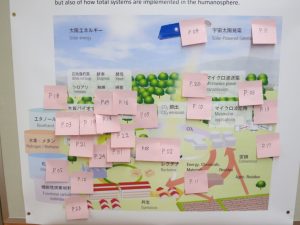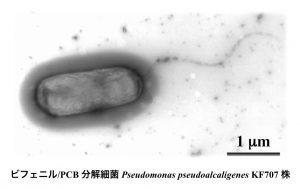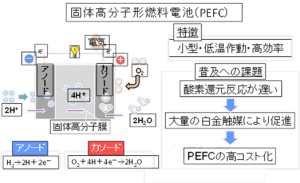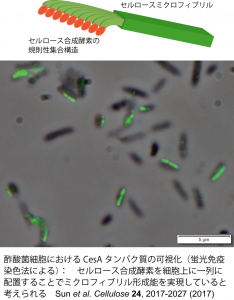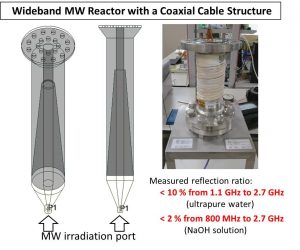2016 Activity Report for Mission 2: Advanced Development of Science and Technology towards a Solar Energy Society
Updated: 2017/10/31
Plenary meetings
We discussed the following items through seven general meetings.
- How Mission 2 activities developed in the past six years.
- Organization of previous research themes in Mission 2.
- Suggestion of interdisciplinary research themes in Mission 2.
- Poster presentations on Mission 2 in the humanosphere symposium held on January 10, 2017.
- Collaboration with the Malaysia symposium, Asia Research Node.
Poster presentation on Mission 2−related studies
(1) Biochemistry and polymer science for studying biomass formation.
(2) Evaluation of power transmission efficiency between array antennas in the near field.
(3) Analysis of interaction between carbohydrate binding modules of cellulase and lignin.
(4) Study on a 5.8 GHz band rectenna rectifying circuit for the inside wireless system of a satellite.
(5) Vanillin production from woody biomass by complex−peroxide reaction accelerated by microwave.
(6) Study to improve efficiency and noise on a magnetron by computer experiments.
(7) Visualization of cellulase molecule.
(8) Study on rectifiers with intermittent input signals.
(9) Analysis of binding between the tandem dimer of 12-mer peptide and lignin.
(10) Study on a 5.8GHz power-variable phase-controlled magnetron for wireless power transfer.
(11) NMR study on lignocellulose deconstruction by termite digestive system.
(12) Preparation of nitrogen-doped carbons from cellulose for oxygen reduction reaction.
(13) Design of microwave heating apparatus of titanium powder for mass production.
(14) Characterization of Arabidopsis AtMYB63-overexpressing rice.
(15) Design of C-band high-efficiency active antenna integrated with a GaN amplifier.
(16) Use of biphenyl/PCB-degrading bacteria for the production of useful aromatic compounds from wood biomass.
(17) Size and electromagnetic field distribution of a rectangular single-mode resonator influenced by a heated material.
(18) Surface imaging analysis of lignin molecules on wood.
(19) Analyses and enzymatic degradation of lignin−carbohydrate complexes in wood biomass.
(20) Study on re-radiation characteristics of rectenna harmonics for a harmonics-based retrodirective system.
(21) Extraction and enzymatic conversion of lignin using enzymes from a marine microorganism.
(22) Visualization of lignocellulose formation process using synthetic chemical probes.
(23) Shape effect of microwave heating behavior in carbon fiber.
(24) A simple approach to cellulose extraction from biomass.
The following photograph shows the poster presentation map indicating what research field each study is related to in the mission 2.
Research 1:Discovery of 12-mer peptides that bind to wood lignin (Takashi Watanabe)
[Topic in 2016: Discovery of peptides that bind in a sequence-dependent manner to lignin isolated from wood]
We have identified novel lignin-binding peptides possessing characteristic sequences and elucidated the factors involved in lignin binding. Our results lead to a useful platform for designing synthetic and biological catalysts that selectively bind to lignin. Published in Scientific Reports and press released.
Publications
Yamaguchi, A.; Isozaki, K.; Nakamura, M.; Takaya, H.; Watanabe, T., Discovery of 12-mer peptides that bind to wood lignin. Sci Rep 2016, 6, 21833.
Press Release
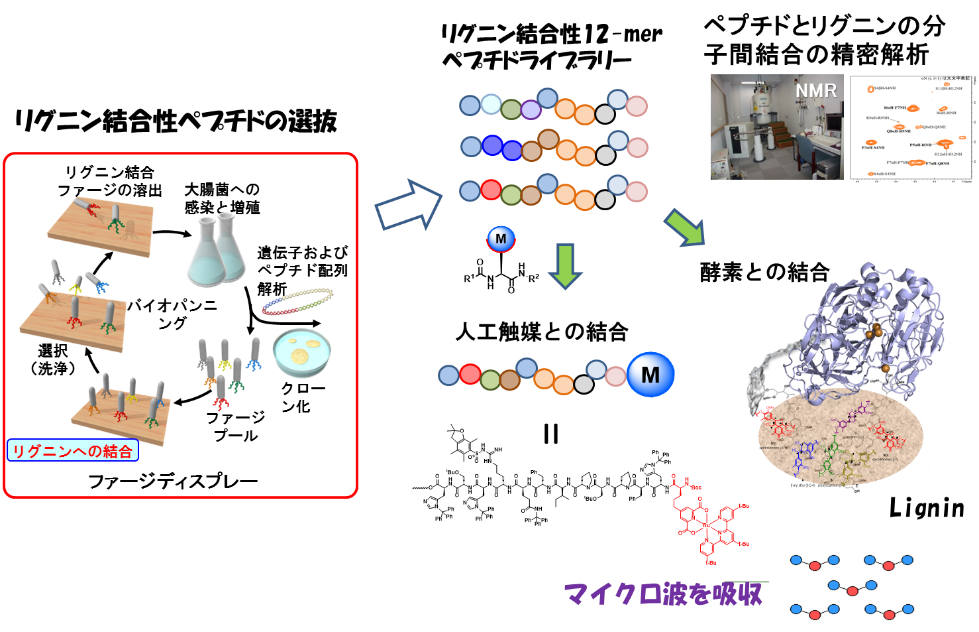
Research 2:Use of Biphenyl/Polychlorinated Biphenyl-Degrading Bacteria for the Production of Useful Aromatic Compounds (Takahito Watanabe)
We focus on the production of useful aromatic compounds from wood biomass, such as lignin-derived aromatic compounds, by molecular breeding of aromatic compound-catabolic genes from biphenyl/PCB-degrading bacteria. We are now trying to screen and identify useful genes and proteins from these bacteria using genomics and proteomics technologies.
Publication
Suenaga, H., Yamazoe, A., Hosoyama, A., Kimura, N., Hirose, J., Watanabe, T., Fujihara, H., Futagami, T., Goto, M., and Furukawa, K. Complete genome sequence of the polychlorinated biphenyl-degrading bacterium Pseudomonas putida KF715 (NBRC 110667) isolated from biphenyl-contaminated soil. Genome Announc. 5(1):e01624-16. doi:10.1128/genomeA.01624-16 (2017).
Research 3: Synthesis of Nitrogen-Doped Carbons from Cellulose for Oxygen Reduction Reaction (Toshimitsu Hata)
Nitrogen-doped carbons with and without chelate transition metal ions, such as Fe and Co, were prepared from cellulose acetoacetate and melamine by pulse current sintering, producing cathodic catalyst materials for polymer electrolyte fuel cells. Both cellulose and cellulose contained biomass were found to be potential raw materials for the cathode electrodes of PEFC from this study.
Research 4: Fundamental Chemistry of Lignocellulosic Biomass and Green Conversion (Takashi Watanabe, Hiroshi Nishimura)
[Topic in 2016: Conversion of lignin, one of the main forest biomass components, by enzymes of marine microorganism origin]
Collaborative research between RISH and JAMSTE. Reported in ChemSusChem and press released.
Publication
Ohta, R. Hasegawa, K. Kurosawa, A.H. Maeda, T. Koizumi, H. Nishimura, H. Okada, C. Qu, K. Saito, T. Watanabe, and Y. Hatada, “Enzymatic Specific Production and Chemical Functionalization of Phenylpropanone Platform Monomers from Lignin”, ChemSusChem, DOI: 10.1002/cssc.201601235; 16 Dec 2016
Press Release
- Japan Science and Technology Agency (JST)
- JAMSTEC
- Kyoto Univ.
- Nikkei Biotech Online, News (in Japanese)
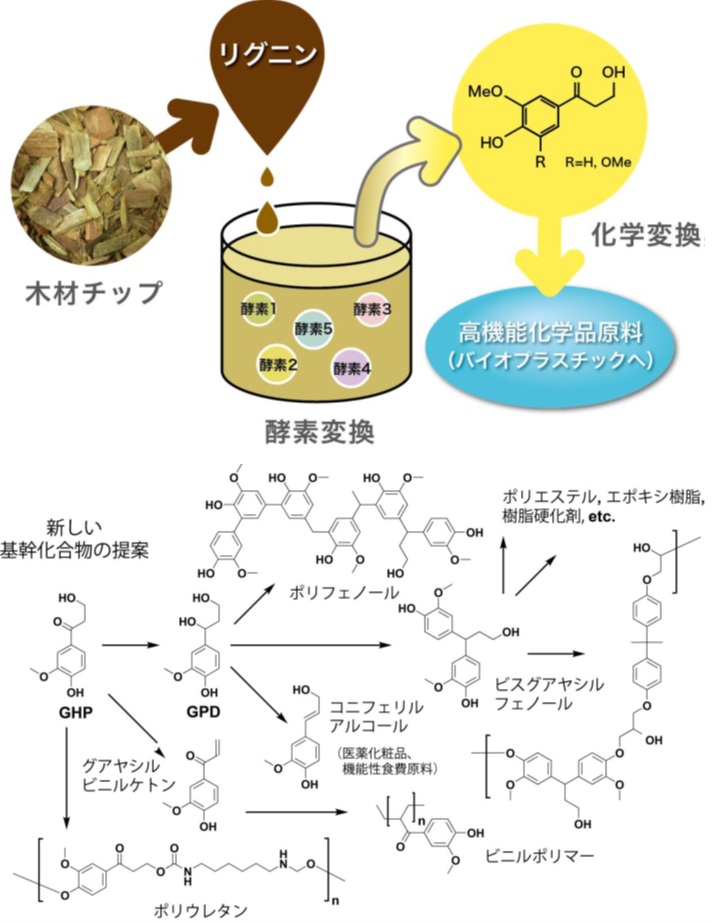
Research 5: Mechanism of Polymer Molecules Assembly in Biomass Formation (Tomoya Imai)
Given that biomass is solid of polymers, polymer science, in addition to biochemistry, is required for understanding its biosynthesis mechanism. Fusion research of these fields of science is then conducted for future efficient utilization of biomass through providing the basic insight of biomass formation.
Publications
Shi-jing Sun, Tomoya Imai, Junji Sugiyama, Satoshi Kimura “CesA protein is included in the terminal complex of Acetobacter” Cellulose, 24, 2017-2027 (2017)
Shi-jing Sun, Yoshiki Horikawa, Masahisa Wada, Junji Sugiyama, Tomoya Imai “Site-directed mutagenesis of bacterial cellulose synthase highlights sulfur–arene interaction as key to catalysis” Carbohydrate Research, 434, 99-106 (2016)
Paavo A. Penttilä, Junji Sugiyama, Tomoya Imai, “Effects of reaction conditions on cellulose structures synthesized in vitro by bacterial cellulose synthases”, Carbohydrate Polymers 136, 656-666 (2016)
Research 6: A Simple Pre-treatment for Glucose Extraction from Lignocellulosic Biomasses (Tsuyoshi Yoshimura, Saburo Horii)
We found that LiOH treatment could significantly enhance the glucose recovery by the cellulase treatment from lignocellulosic biomasses The recovery rates of glucose were higher than those of NaOH treatment up to 4 hours’ treatment with 0.5 – 2.0% cellulose concentrations.
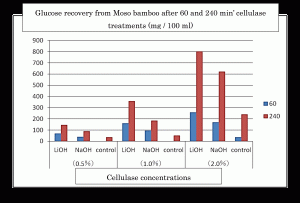
Research 7: Research and Development of Microwave Heating Applicators for Chemical Reaction (Tomohiko Mitani)
We have designed microwave heating applicators for chemical reaction via electromagnetic simulation, and evaluated the developed apparatuses. Development of a wideband microwave reactor was reported in Chemical Engineering Journal. We have also started to design a simultaneous microwave heating apparatus for a number of samples.
Publication
Mitani, N. Hasegawa, R. Nakajima, N. Shinohara, Y. Nozaki, T. Chikata, and T. Watanabe, “Development of a wideband microwave reactor with a coaxial cable structure”, Chemical Engineering Journal, vol.299, pp. 209-216, Sep. 2016 (Open Access).
International Workshop
2nd JASTIP Bioresources and Biodiversity Lab Workshop, “Collaborative Bioresources and Biodiversity Studies for the ASEAN Region”
Humanosphere Asia Research Node Workshop toward Sustainable Utilization of Tropical Bioresources (2017/1/23, Uji)
Japan-ASEAN Science, Technology, and Innovation Platform (JASTIP) and Asia Research Node on Humanosphere Science (ARN), RISH, held an international workshop on bioresources and biodiversity studies. Twenty-six papers by 16 foreign researchers were presented, and international collaborative research on tropical biomass utilization was discussed.


